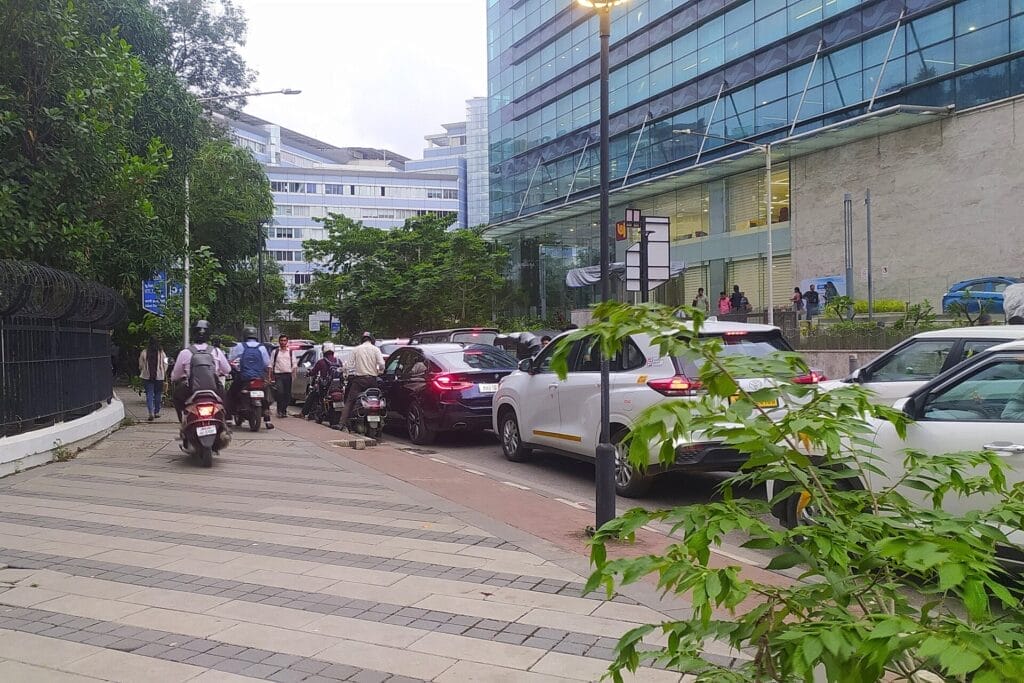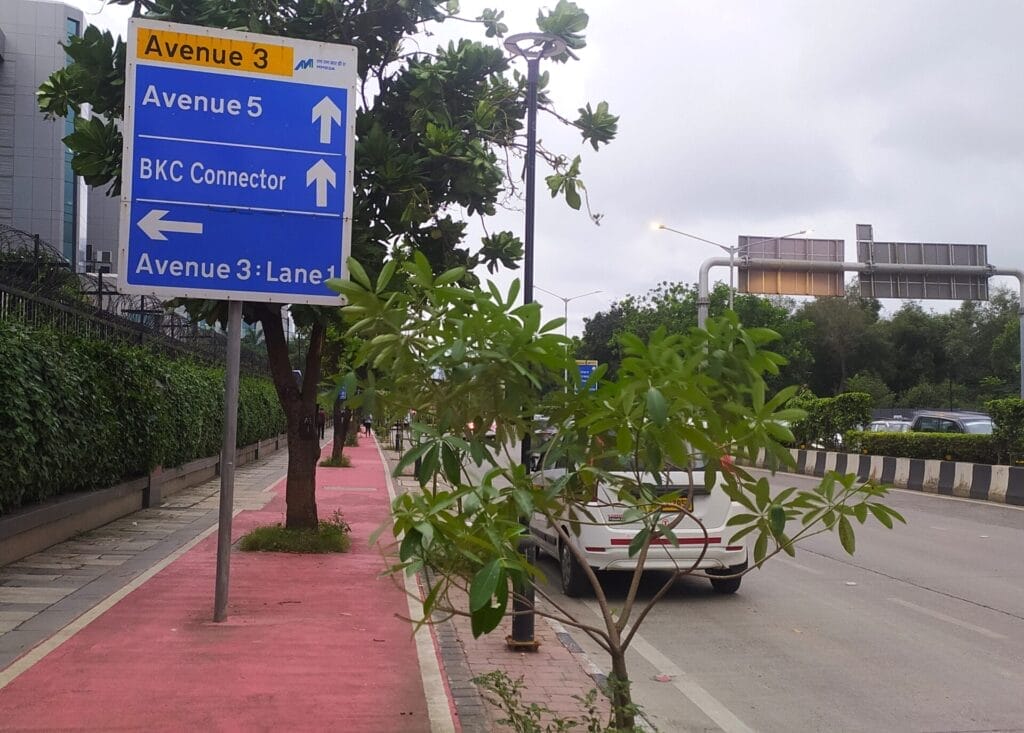In the past few months, heavy traffic jams in the Bandra Kurla Complex (BKC) have led to suggestions of drastic measures. Mumbai’s guardian minister Mangal Prabhat Lodha has proposed that the dedicated cycle tracks at BKC be scrapped and merged with the main vehicular road to accommodate more vehicles.
This has led to much debate about the fate of the BKC cycling track, Mumbai’s first and longest stretch of planned cycling track. However, the Mumbai Metropolitan Regional Development Authority (MMRDA) is yet to officially declare its intent and whether it will act upon Lodha’s suggestion.
However, the cycling track which runs parallel to internal roads of BKC, built at a cost of Rs 6.5 crore, is hardly used by the cycling community. The track is 9 km long though it was planned to be 13 km long.
Twists and turns in the cycle track journey
The cycle track was inaugurated in 2011 by the then chief minister Prithviraj Chavan even before it was completed. The planned extension of another three km never happened. In fact, in 2016, the MMRDA cut a crucial part of the the cycle track from Kala Nagar to MTNL, for a new dedicated bus lane, rendering it unusable. In 2021, it was refurbished and inaugurated by chief minister Uddhav Thackeray again.
The BKC cycle track was meant to provide commuting support for the school children, the office-goers and even the cycling community in the BKC. RTI activist Anil Galgali had found that the cycling track was built without any feasibility tests done to assess if there was a demand among citizens for cycling infrastructure.

The MMRDA planned a series of events and initiatives to popularise the cycle tracks over a period of time. The MMRDA also put up cycle stands, introduce Yulu bikes for last mile connectivity but the first major cycling track of Mumbai simply failed to take off.
Read more: No city for cyclists: Enthusiasts decry lack of road safety
BKC, the business district and traffic hotspot
The BKC was designed and developed as an alternative to the Nariman Point, the commercial business district (CBD) at the southern tip, and it attracted major financial institutions.
However, it also experienced completely choked roads that has made commuting to and fro from BKC, particularly during the evening peak hours, a daily harrowing experience for office-goers. In spite of the presence of public and private bus services, including autorickshaws, the BKC does not have adequate connectivity for the office-goers.
The traffic has been so bad that it has led to the MMRDA constantly pushing newer cash-rich alternatives as solutions. Currently, the traffic mess at BKC has got the MMRDA to come up with a Rs 1018 crore driverless pod taxi, an overhead rail taxi service between the 8.8 km long distance Bandra and Kurla stations.
Why is the BKC cycle track inconvenient?
“This is because the track is not seamless, it is disjointed and often merges with the road, gets back on track and even gets back on road again. Besides, the track is used by pedestrians, jaywalkers and even by motorcyclists who try to escape from the jammed streets, “ says Amar, who cycles at BKC once in a while.
For office-goers like Amit, using the BKC cycling track is not even an option. “Even if I were to stay within 5 km radius of BKC, I would still find the track unusable, because it fails to connect me to anywhere outside it. It is islanded on the internal roads, disconnected even from its own main road. Even if I were to reach the highway, cycling is a bane, since the highways are unsafe and cycles are banned on the flyovers. You cannot cycle beyond BKC, which is also impractical because there is no residential zone within the BKC,” says Amit.
| Inauguration of cycle track – 2011 |
| Cycle track truncated, disconnected – 2016 |
| Cycle track refurbished – 2017 |
| Demand for scrapping track – 2024 |
The main issue though is that it leads nowhere and can be used to just encircle within the BKC. “It could have been connected to the Bandra or Kurla station or at least to the Western Express Highway (WEH) nearby to ensure better connectivity to the city. Currently, these tracks lead nowhere,” says urban planner-architect Alan Abraham.
“The shutting down of the Sion flyover and the lack of access to two wheelers and autorickshaws on the BKC connector, has only compounded the traffic issues on this stretch,” he explains.
Other challenges at BKC cycle track
“Most of the buildings do not allow parking or even entry for bicycles. Cycles are costly in the range of Rs 50 k – 1.5 lakh. Such cycles cannot be kept on the streets for the entire day during office hours,” says Amar, who recalls his friend struggling to convince his office building authorities to permit cycling parking slots.
Despite being the longest cycling stretch in Mumbai, the BKC cycling track fails to attract even the active cyclists community here.

Avid cyclist Nitin Kumar says that though his office is no longer at BKC, he rides occasionally on weekdays in the mornings and rides with his son at the BKC tracks on a few Sunday mornings. He prefers it because it is the longest cycling stretch currently available in Mumbai.
Nitin, who has also cycled on the Noida and Delhi cycle tracks, feels that they are way better since they are more than 10 km long and offer seamless cycling experience unlike the BKC one, which is disconnected at multiple points.
Neurosurgeon and Mumbai’s bicycle mayor Dr Viswanathan Iyer feels that the cycle track fails to connect with the cycling community. “Unlike Beijing, which encourages commuting to work by cycle and has strong infrastructure and penalties for those who walk or enter into cycling tracks, here the maintenance of tracks and penalties against those who stray into tracks, are lacking. This means that though the cycling infrastructure is in place, the support system in terms of a mechanism to retain it exclusively for cyclists and prevent others like pedestrians from entering it, is lacking.”
Not surprisingly, a 2017 survey showed that only 2% of Mumbai uses bicycles to pedal to work. However, in the larger context, the national family health survey showed that about 43% of households in urban India use cycle for mobility.
Will merging the cycle track solve the traffic?
Planners and activists have pointed out that merging the track will not really solve the traffic problem. Historically, it is seen that more vehicles get added on the roads leading to the same traffic snarls after some time. They suggest significant improvement in public transport facilities to ease the traffic, and also making the existing cycle track more user-friendly.
Alan believes that effective traffic management, rather than widening roads, is key to alleviating congestion. “BKC is a prime example of poor planning, attempting to replicate the Nariman Point model, which is entirely commercial with no residential areas. Without residential zones and mixed-use planning in BKC, the cycle track is out of place and underutilised.
Alan emphasises that a better approach to solving BKC’s traffic problems would be to introduce dedicated bus corridors and increase the number of buses, rather than dismantling the cycling infrastructure.
| Call to action – What can the authorities do to make the cycle track user-friendly? |
Improve connectivity of the BKC cycling track with the nearest railway stations, namely Bandra and Kurla. Connect the BKC tracks with city’s arterial roads like the Western Express Highway (WEH) or even the Lal Bahadur Shastri (LBS) Marg. Encourage buildings to permit cycle parking. Ensure that the track is seamless and without signposts, poles, trees. Ensure that the track is not used by two-wheeler drivers and pedestrians. Public shared cycle facilities could be made available for last mile connectivity. |